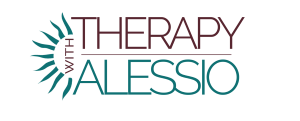OCD is one of the most painful experiences that people have and, among all mental health conditions, OCD seems to be one of the most difficult to deal with. I know that, virtually, all people who suffer from OCD spend a considerable amount of time searching for ways to improve and get better.
The majority of sources and articles available online and in print are based on CBT techniques. I believe CBT has provided great understanding of what OCD is and how it functions, and it is the only therapy that has provided clear guidelines on how to deal with it. At the same time, there is virtually nothing written about other methods to deal with OCD.
In this article I am going to describe how the IFS model can help OCD in comparison with CBT. I will be using IFS terminology and I suggest that the reader refers to this article on IFS to become familiar with IFS language.
Treating OCD as a part in IFS
In IFS, we use the language of parts to describe how we function. As a consequence, the OCD is considered a part of the person. This means that, even if the OCD seems quite a strong presence in the client’s life, there is much more to a person than OCD.
At this stage CBT and IFS might look similar because CBT also encourages clients to label the anxieties and the intrusive thoughts that form the OCD and not engage with them.
The main difference between CBT and IFS is in how we relate to the OCD part.
One of the foundational elements of IFS is that all parts are welcome, and, therefore, the OCD part is not dismissed or ignored, but it is respected. Respect does not mean that the client will believe the content of intrusive thoughts or that they will follow up on whatever behaviour the OCD wants. IFS gives us a way to make sure that there is enough safety and calm before offering respect to the OCD part. This might take a different amount of attempts depending on the severity of the OCD, and on the strength of the relationship between therapist and client.
Healing OCD with IFS
The main difference between CBT and IFS is in the definition of “cure” of OCD.
CBT therapy has the ultimate goal of empowering the client to overcome OCD thoughts and anxieties by never engaging with them or by using exposure therapy to demonstrate that the OCD fears and obsessions have got no evidence to exist.
IFS believes that healing is the result of the re-organisation of parts so that extreme behaviour is substituted by more functional ways of thinking and acting, and, above all, IFS aims at healing the traumatic events that have led to the development of OCD symptoms.
The result of healing the trauma that fuels OCD is a spontaneous decrease of OCD anxieties and intrusive thoughts and, in my opinion, this form of healing is preferable to the one described by CBT. Using IFS language, the CBT approach aims at creating a new part in the system that is tasked with managing the OCD, while there is no attention paid to discovery and healing of the trauma that is fuelling the OCD.
Choosing the method that best suits you
There is no way of saying what method works best for a person.
Therapy outcomes depend on many factors and not only on the method used. Sometimes the quality of the therapeutic relationship is the biggest healing factor, and it is ultimately up to the client to find the best combination of therapist and method that can best suit them.
One final note…
I hope this article has given you some insight into the IFS method. I personally write these articles and they are freely available on my website. I kindly ask that you reference them by quoting this webpage if you use them for personal, professional or educational purposes.
If there are topics you would like to know more about, please let me know.




